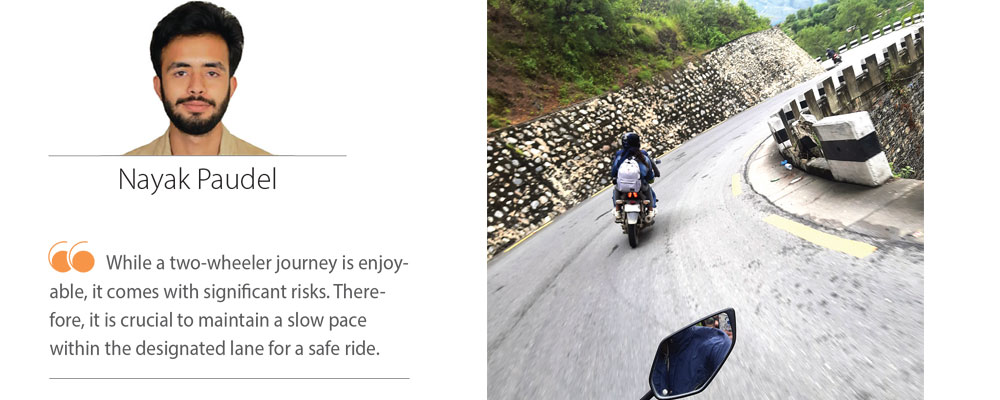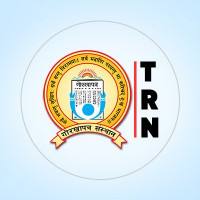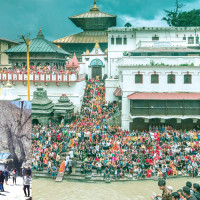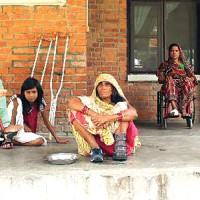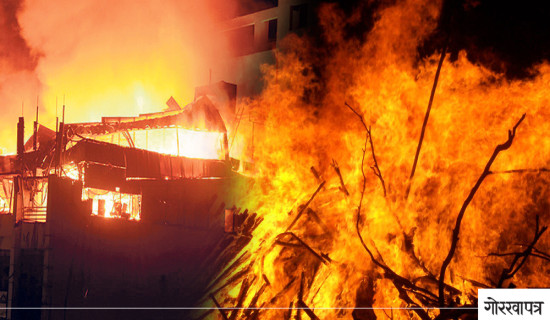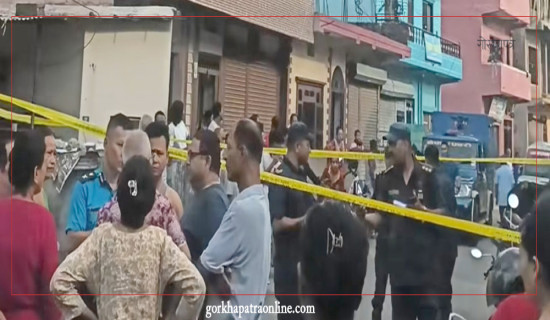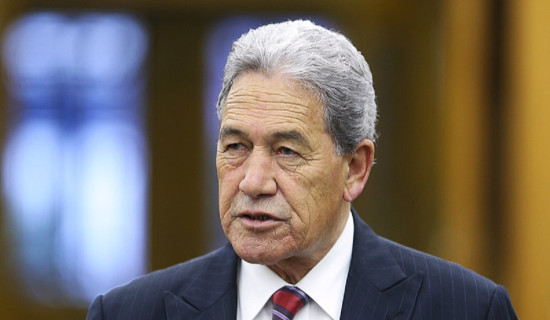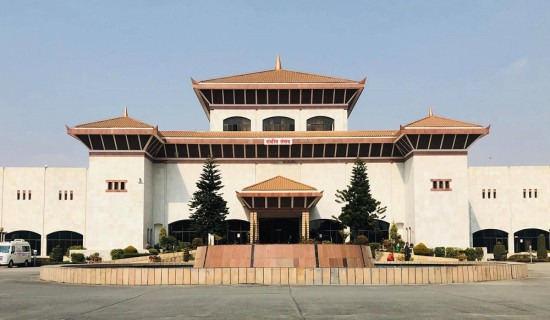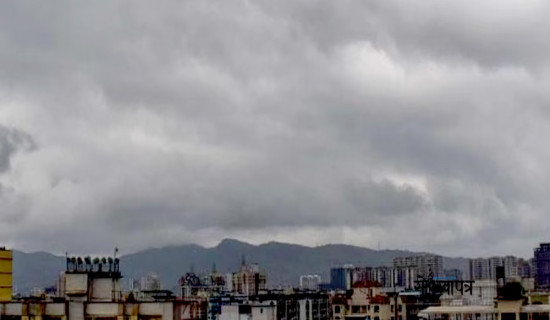- Wednesday, 28 May 2025
Thrills And Risks Of Two-wheeler Travel
Every year, during Dashain, Kathmandu Valley sheds its crowded ambiance, appearing almost deserted. Millions of Nepalis, typically temporary residents, travel back to their hometowns, leaving the valley noticeably vacant. This mass exodus creates a unique stillness in contrast to the usual lively atmosphere.
Millions temporarily dwell in the Kathmandu Valley, seeking essentials like health, jobs, and education. Thanks to the nation's major festival, which prompts the closure of nearly all public and private offices, students and professionals can enjoy a five-day break with family, friends, and relatives. A decade ago, most people relied on public buses for transportation. Although still widely used, alternative options like vans (such as HiAce), jeeps, and even flights during Dashain have gained popularity.
Despite the increased cost of airfare, flights have experienced a rise in passenger numbers. Furthermore, personal two-wheelers like motorcycles and scooters have become increasingly common, serving as prevalent modes of transportation throughout Nepal. According to the National Population and Housing Census 2021, there were 1,816,121 households with one or more motorcycles or scooters. While two-wheelers are mostly bought for easier and faster commutes along short distances, they are being highly used to tour hundreds of kilometres, even off-road, and reach different corners of the country nowadays. For instance, making videos or vlogs of motorcycle rides to different places has been popular on online platforms recently.
After my initial journey to Pathari-Shanishchare in Morang, Eastern Nepal, three years ago, I developed a fondness for the ride. Despite the fatigue from hours on the country's rough highways, the experience was rewarding, encouraging me to travel on several long tours using my motorcycle. Most of these journeys have been to my hometown, covering the approximately 450-kilometre one-way distance, translating to a seven-hour ride from Kathmandu.
My motorcycle facilitated my journey to Halesi in Khotang via the Ghurmi-Katari Highway, despite its severe condition. This route, though challenging, offers glimpses of stunning natural scenery. Perhaps it is the profound connection with nature that inspires riders to choose their two-wheelers repeatedly for extended trips. Riding a motorcycle establishes a direct link to the surroundings, allowing riders to embrace the open road and witness evolving landscapes firsthand. Owning a personal two-wheeler provides the freedom to stop anywhere at will. Motorcycles and scooters, being easy to park and requiring less space, offer enhanced convenience.
This experience surpasses the limitations of sitting by a window in a public vehicle, where beautiful scenes pass by too quickly. The BP Highway (Banepa-Bardibas Highway) treats riders to breathtaking views, enhancing the joy of the journey. The increasing number of two-wheelers on this route daily attests to the growing trend of using motorcycles for extended rides. Moreover, the highway is packed with two-wheelers rather than the dominating vans and jeeps during Dashain. Nevertheless, unless the roads are proper, not as we see in developed countries, people fear taking their two-wheelers. Two-wheelers are also more agile and can easily navigate through traffic, allowing riders to reach their destinations faster.
Many people simply enjoy the experience of riding a motorcycle. The sense of freedom and connection with the road can be thrilling. For instance, the opening of the Bhiman-Chatara Road, a section of the Mid Hill Highway, has attracted more and more vehicles along the route. Until two years ago, the road was rarely used as people travelled further down to Bardibas from Bhiman and met the East-West Highway to head east. Now, they head east from Bhiman itself. I have also been able to travel along the new highway at least half a dozen times already. A four-lane road with snake turns passing along several rural settlements, forests, and hills of Sindhuli and Udayapur districts along the banks of the rivers is a roller-coaster experience. Moreover, the highway is less crowded, allowing riders to ride safer and faster.
The fresh air, other than when gravel roads arrive or a big vehicle ahead emits smoke, provides a different joy for those who have been fed up with the dusty Kathmandu Valley. As soon as I cross Dhulikhel and head forward along the BP Highway, nature welcomes me with greenery and cleanliness. On the contrary, when I arrive in Dhulikhel on the return trip to Kathmandu, the journey ahead, which is welcomed by a crowd of vehicles and people and concrete houses, feels tiresome. When I remember my travels along the same highway in vans and Jeeps earlier, I feel suffocated. The windows in a van are often closed, and the air conditioner is operated. But still, there used to be different smells, making it difficult to breathe.
Likewise, when a fellow passenger vomits due to health reasons, the whole journey feels longer and more difficult. It is also tiresome to tell the driver again and again to stop at a place when there is an urgent call of nature. Motorcycles are often preferred for solo travel, while group rides with fellow enthusiasts are also popular for long journeys. In some regions, motorcycles and scooters are an integral part of the local culture and using them for long trips is a way to connect with that culture. In Dashain, a two-wheeler ride is also economical, as the fare by bus, van, and aeroplane is highly expensive.
However, there is always a need to prepare oneself before leaving on a long ride. A rider should sleep or rest properly before taking off on a long ride. Riders should ensure that their vehicles are in good condition (air in tyres, lights, and brakes). We should also be well-informed of weather conditions because riding two-wheelers during rain is hectic and risky. Moreover, one should always be more cautious while riding two-wheelers because they are the most popular vehicles for accidents. Two-wheelers are one of the most unsafe vehicles because they lack the protective structure of an enclosed vehicle. Riders and pillions are highly exposed to injuries during collisions or while tipping over.
According to Nepal Police Mirror 2022, of the 39,379 vehicles involved in road accidents in the year, 19,974 were two-wheelers, especially motorcycles. Data also show that 21,675 accidents in 2021/22 were due to the negligence of drivers and riders.
While a two-wheeler journey is enjoyable, it comes with significant risks. Therefore, it is crucial to maintain a slow pace within the designated lane for a safe ride. As emphasised by traffic police, 'safety lies in a slow ride.'
(Poudel is a journalist at The Rising Nepal.)

